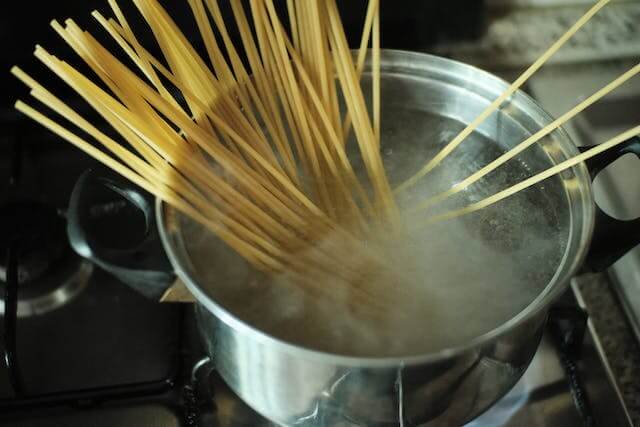In the fast-paced world of convenient meals, Pot Noodles have carved a niche for themselves, offering a quick and easy solution for those on the go. However, amid the allure of instant gratification, a pressing question arises: Are Pot Noodles a healthy choice? As we unravel the layers of this popular convenience food, our exploration will delve into its nutritional composition, the ingredients that shape its identity, and the cooking methods employed. Importantly, we’ll address common queries: Can Pot Noodles aid weight loss or fit into a diet, and are they potentially detrimental to your health? Join us on this journey as we scrutinize the facts to help you make informed decisions about whether Pot Noodles aligns with your health and wellness goals.
Table of Contents
Nutritional Analysis of Pot Noodles
Pot Noodles have gained notoriety for their convenience, but understanding their nutritional content is crucial for making informed dietary choices. Let’s break down the macronutrient and micronutrient profile to unveil what lies within these quick-fix meals.
1. Macronutrients:
- Carbohydrates: Pot Noodles are often rich in carbohydrates, providing a quick source of energy. However, the type and amount of carbs, especially refined ones, may raise concerns for those mindful of their glycemic index.
- Proteins: The protein content in Pot Noodles can vary. While they may offer some protein, it’s essential to assess whether it meets your daily requirements for muscle maintenance and repair.
- Fats: Typically, Pot Noodles contain moderate levels of fat. Be mindful of the types of fats present, as excessive saturated or trans fats can contribute to health issues.
2. Micronutrients:
- Pot Noodles may contain essential vitamins and minerals, but the concentrations might not be as high as those found in whole, nutrient-dense foods. Examining these micronutrients can provide insights into the overall nutritional value.
3. Pot Noodles for health and diet:
- Are Pot Noodles healthy?: Our nutritional analysis aims to answer this critical question, evaluating the balance of macronutrients and micronutrients.
- Pot Noodles for diet: Assessing the carbohydrate and protein content will help determine whether Pot Noodles can be incorporated into a diet plan.
Ingredients Used in Pot Noodles
To comprehend the health implications of Pot Noodles, a closer inspection of the ingredients they contain is imperative. Let’s dissect the components that contribute to the overall nutritional profile and evaluate the potential effects on your well-being.
1. Noodle Base:
- The primary component, often made from wheat flour, may raise concerns for those with gluten sensitivity. Some variations use alternative flours like rice or buckwheat, catering to specific dietary needs.
2. Seasoning and Flavorings:
- Pot Noodles derive their distinctive taste from a myriad of seasonings and flavor enhancers. While these additives contribute to the savory profile, they might also introduce high sodium levels, impacting cardiovascular health.
3. Dehydrated Vegetables and Proteins:
- The inclusion of dehydrated vegetables and proteins aims to enhance the nutritional content. However, the dehydration process might diminish the potency of certain vitamins and minerals.
4. Additives and Preservatives:
- Pot Noodles often incorporate additives and preservatives to prolong shelf life and maintain flavor. Understanding these components is crucial for those seeking minimally processed food options.
5. Are Pot Noodles bad for you:
- Are Pot Noodles bad for you: Examining the types of ingredients and additives will provide insights into potential health risks associated with regular Pot Noodle consumption.
Preparation and Cooking Methods

The journey of Pot Noodles from the packet to your bowl involves specific preparation methods that can significantly influence their nutritional profile. Understanding how these meals are crafted sheds light on the final product’s healthiness.
1. Instant Preparation:
- Pot Noodles are celebrated for their swift preparation; hot water is typically all that’s needed. However, the convenience comes with considerations regarding the preservation of nutrients and the potential for excessive sodium intake.
2. Dehydrated Ingredients:
- The dehydrated nature of many Pot Noodle components may impact the retention of nutritional value. While dehydrated vegetables and proteins contribute to flavor, the dehydration process could reduce the potency of certain vitamins and minerals.
3. Sodium Content:
- Quick-prep meals often carry higher sodium levels for flavor enhancement and preservation. Monitoring sodium intake is crucial, especially for individuals with dietary restrictions or those aiming to maintain heart health.
4. Cooking and diet:
- Cooking Pot Noodles for diet: Understanding the quick preparation methods and their implications on nutrient retention will help assess whether Pot Noodles align with dietary goals.
Discover also some great facts & benefits of Huel
Health Considerations
As we unravel the layers of Pot Noodles, it’s crucial to address potential health considerations associated with regular consumption. Examining factors such as sodium content, additives, and calorie levels can provide a comprehensive understanding of how Pot Noodles might impact your well-being.
1. Sodium Concerns:
- The flavor-enhancing role of sodium in Pot Noodles may lead to elevated levels. Excessive sodium intake is associated with increased blood pressure, which can contribute to heart-related issues.
2. Additives and Preservatives:
- The presence of additives and preservatives, while extending shelf life, can raise concerns for those aiming to minimize their intake of processed or artificial ingredients.
3. Caloric Density:
- Pot Noodles, while convenient, can be calorically dense. Regular consumption without attention to overall calorie intake may contribute to weight-related concerns.
4. Individual Dietary Considerations:
- Individuals with specific dietary needs, such as those with gluten sensitivity or following a vegetarian or vegan diet, should carefully scrutinize the ingredients to ensure compatibility.
Alternatives and Healthier Options
For those seeking a balance between convenience and health, exploring alternatives and potential modifications to traditional Pot Noodles becomes essential. Let’s delve into ways to make Pot Noodles a healthier choice or discover substitutes that align better with your nutritional goals.
1. Naked Noodles as an Alternative:
- Explore Naked Noodles as a potentially healthier alternative. With their distinct composition, including ingredients like konjac root or chickpeas, Naked Noodles offers a unique nutritional profile that may better align with specific dietary preferences.
2. DIY Pot Noodle Kits:
- Crafting your Pot Noodle at home allows you to control the ingredients. Opt for whole-grain noodles, fresh vegetables, and lean proteins to enhance the nutritional value.
3. Veggie-Packed Additions:
- Boost the nutritional content of your Pot Noodles by adding fresh or steamed vegetables. This not only increases fiber intake but also introduces a spectrum of vitamins and minerals.
5. Lean Protein Enhancements:
- Consider incorporating lean protein sources such as grilled chicken, tofu, or legumes to elevate the protein content and create a more balanced meal.
6. Portion Control:
- Pay attention to portion sizes to manage caloric intake. Combining Pot Noodles with a side of salad or a piece of fruit can create a more well-rounded meal.
7. Pot Noodles and weight loss:
- Are Pot Noodles good for weight loss?: Exploring alternatives and modifications aims to provide insights into making Pot Noodles a more weight-loss-friendly option.
A noodles lover? get to know about the nutritional truth about the Aldi Protein Pancakes
Public Perception and Reviews
Understanding how the public perceives Pot Noodles and reviewing consumer experiences provides valuable insights into real-world perspectives on their healthiness. Let’s explore common themes and concerns raised by consumers to offer a well-rounded view.
1. Consumer Reviews:
- Examining online platforms and consumer reviews provides firsthand accounts of individuals who have incorporated Pot Noodles into their diets. Insights from these reviews can shed light on both positive and negative aspects.
2. Common Concerns:
- Identifying recurring themes in consumer feedback allows us to address common concerns, be it related to taste, nutritional value, or health impacts.
3. Balancing Perspectives:
- Recognizing that public opinion may vary, we aim to provide a balanced perspective that considers both the convenience and potential drawbacks of Pot Noodles.
Last words on Pot Noodles
As we navigate the intricate landscape of Pot Noodles, it’s evident that their healthiness is a nuanced subject. The nutritional analysis unveils a mix of carbohydrates, proteins, and fats, while the ingredient scrutiny highlights considerations around sodium and additives. The preparation methods, though convenient, may impact nutrient retention.
Health concerns arise, particularly regarding sodium levels, caloric density, and the presence of additives. However, by recognizing these considerations, individuals can make informed choices aligning with their dietary needs.
For those seeking healthier options, DIY Pot Noodle kits and strategic additions of fresh vegetables and lean proteins can transform this convenience food into a more nutritious meal. Portion control and mindful choices further contribute to a balanced approach.
Public perception, as reflected in consumer reviews, varies. Some appreciate the convenience, while others voice concerns about taste and nutritional value. This diversity underscores the subjective nature of dietary choices.
In the quest for a balance between convenience and health, individuals should weigh the pros and cons, considering Pot Noodles as an occasional treat rather than a dietary staple. Ultimately, the key lies in mindful consumption, embracing alternatives when possible, and recognizing that individual dietary needs shape the definition of a “healthy” choice.



